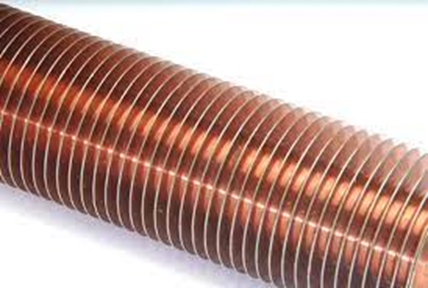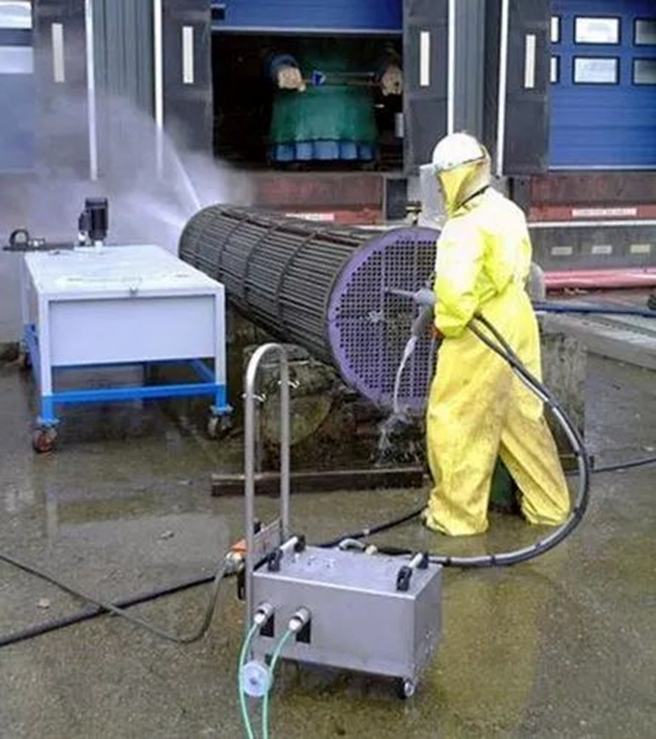Enhancements of shell and tube heat exchanger for Performance & Efficiency
Enhancements
of shell and tube heat exchanger for Performance & Efficiency
Enhancing
the performance of a shell and tube heat exchanger involves optimizing its
design, operation, and maintenance to achieve better heat transfer efficiency,
lower energy consumption, and reduced operating costs. Here's a detailed explanation in this blog.
Methods for
Performance Enhancements:
Improved
Design:
Integration of
Advanced Materials:
Consider
discussing the integration of advanced materials such as titanium or stainless
steel for construction, which offer better corrosion resistance and longevity,
thereby reducing maintenance and replacement costs over time.
Heat Exchanger
Sizing and Selection Criteria:
Provide insights
into the process of sizing and selecting shell and tube heat exchangers,
considering factors such as fluid properties, flow rates, temperature
differentials, and space limitations. Highlight the importance of working
closely with manufacturers or consultants to customize solutions that meet
specific project requirements.
Enhanced Tube Geometry: Use tubes with enhanced geometry such as rifled or enhanced surface tubes to increase turbulence and improve heat transfer rates.
Optimized Tube Layout: Optimize the tube layout to minimize flow maldistribution and pressure drop, ensuring uniform heat transfer across the exchanger. Discuss the importance of optimal tube spacing and arrangement to minimize fouling and maximize heat transfer efficiency. Highlight the use of computational fluid dynamics (CFD) simulations and experimental studies to determine the most effective tube configurations for specific applications.
Baffle Design: Optimize baffle design to promote turbulent flow and prevent vibration, which can improve heat transfer efficiency.
Flow
Control:
Flow
Distribution Devices: Install flow distribution devices such as flow
distributors or inserts to ensure uniform flow distribution across the tube
bundle.
Flow
Modulation: Implement flow modulation techniques such as variable speed pumps
or flow control valves to adjust flow rates based on operating conditions,
maximizing heat transfer efficiency.
Simulation and Modelling
Tools:
Discuss the
utilization of simulation and modelling tools for performance prediction and
optimization during the design phase, allowing engineers to experiment with
different configurations and operating conditions virtually before
implementation.
Cleaning
and Maintenance:
Regular
Cleaning: Implement regular cleaning schedules to prevent fouling and scaling,
which can reduce heat transfer efficiency.
Tube Cleaning Techniques: Utilize effective tube cleaning techniques such as mechanical brushing, - inserting brush inside each tube to clean and clear deposits.
chemical cleaning, -by circulating chemical inside shell side by pump and then drain it to clean shell side and tubes outer diameter.
or water jetting -by pressurized water forced inside each tube to clean it from inside of every tube .
to remove deposits and restore heat transfer
rates.
Heat
Transfer Enhancement Devices:
Inserts and Turbulator's : Install inserts or turbulator's inside the tubes to promote turbulence and enhance heat transfer rates.
Surface Coatings: Apply heat transfer enhancement coatings to tube surfaces to improve heat transfer efficiency. for tube sheet outer surface and shell
Thermal
Management:
Insulation: Ensure proper insulation to minimize heat losses to atmosphere and improve overall energy efficiency.
Shell and Tube Heat Exchanger Wrapped in an Inswool Insulation Jacket
Dx Evaporator used in HVAC Chiller
Temperature
Control: Implement temperature control strategies such as variable flow rates
or bypass lines to maintain optimal operating conditions.
Steps for
Implementation:
Performance
Evaluation:
Assess the
current performance of the heat exchanger through measurements and analysis of
key parameters such as temperature profiles, pressure drops, and heat transfer
coefficients.
Identify
Improvement Opportunities:
Identify
areas for improvement such as flow maldistribution, fouling tendencies, or
inefficient design configurations.
Design
Optimization:
Collaborate
with design engineers to implement design modifications or enhancements aimed
at improving heat transfer efficiency and reducing operational limitations.
Installation
of Enhancement Measures:
Implement
selected enhancement measures such as flow distribution devices, tube inserts,
or cleaning protocols based on the identified improvement opportunities.
Performance
Monitoring:
Continuously
monitor the performance of the heat exchanger post-implementation to validate
the effectiveness of the enhancement measures and identify any further
optimization opportunities.
Advanced
Monitoring and Diagnostics Technologies:
Introduce
advanced monitoring and diagnostics technologies, such as vibration analysis,
thermography, and acoustic emissions monitoring, as additional tools for
detecting early signs of performance degradation or mechanical issues in heat
exchangers. Emphasize their role in predictive maintenance strategies to
minimize downtime and optimize reliability.
Energy Recovery
Systems:
Highlight the
potential for integrating energy recovery systems such as heat exchanger
networks or heat pumps, which can further optimize energy usage by capturing
and reusing waste heat from various industrial processes.
Training and
Education:
Stress the
importance of ongoing training and education for operators and maintenance
personnel to ensure proper operation, maintenance, and troubleshooting of
enhanced heat exchangers, ultimately maximizing their long-term performance and
reliability.
Uses and
Applications:
Shell and
tube heat exchangers are widely used in various industries including chemical
processing, petrochemical, HVAC systems, power generation, and refrigeration.
They are
utilized for applications such as heating, cooling, condensation, evaporation,
and heat recovery across a wide range of operating conditions and fluid types.
Cost
Considerations:
The cost of
performance enhancements for shell and tube heat exchangers varies depending on
the specific measures implemented.
Costs may
include equipment procurement, installation expenses, maintenance costs, and
potential downtime for modifications or cleaning procedures.
However,
the long-term benefits such as energy savings, reduced maintenance costs, and
extended equipment lifespan often outweigh the initial investment.
Pros and
Cons:
Pros:
Improved
heat transfer efficiency leads to energy savings and reduced operating costs.
Enhanced
performance can extend the lifespan of the heat exchanger and reduce the
frequency of maintenance shutdowns.
Optimization
measures can result in more consistent and reliable operation, reducing the
risk of process disruptions.
Cons:
Implementation
costs may be significant, especially for complex enhancement measures or
retrofitting existing equipment.
Some
enhancement techniques may require additional maintenance or monitoring
efforts, increasing operational complexities.
Over-optimization
or improper implementation of enhancement measures could potentially lead to
unintended consequences such as increased pressure drop or flow instability.
By
implementing these methods and steps for performance enhancements, operators
can maximize the efficiency and reliability of shell and tube heat exchangers,
ultimately reducing operating costs and improving overall process performance.
Enhancing
the performance of a shell and tube heat exchanger means making it work better
so it can transfer heat more efficiently, use less energy, and cost less to
run. It is a continuous process throughout the life cycle of every shell and tube heat exchanger.





.png)
.png)

.png)
.png)
.png)
.png)
.png)



Comments
Post a Comment